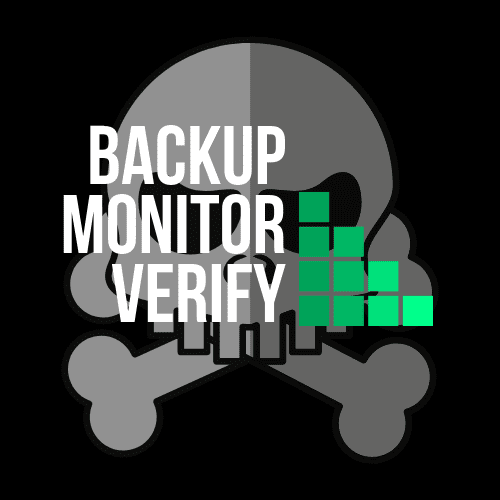Backups are the single most important survival habit for your business. Period. Everything runs through your computer system. If that system is down-especially for an extended period, you run the risk of your business failing. Studies show that over 70% of small businesses go out of business within a year if they have a major, unrecoverable data loss. Running a computer backup is one of those habits you know you’re supposed to do regularly, like flossing your teeth, but you don’t always do it.
Backup – The cornerstone of your IT strategy
Everything comes out of your backups. If you have a ransomware attack it is almost always the only way to recover andhold on to your wallet. What if you have water damage in your computer room and lose your server? What if your operating system updates and the server won’t turn on (boot)? A lot of bad things can happen to your data. Mitigate those hazards with a strong, monitored and tested/verified backup strategy. Backup, monitor and verify.
Rather than facing the seven stages of grief, avoid the loss completely. Your data can easily outlive you if you put some healthy practices into effect. If you are reading this and think you are way ahead of the game because you have a computer backup system in place, congratulations. But have you checked to see if it’s working? Truth is, most owners or CEO’s have no idea if their data is backed up, and where it’s stored. Ensure you have a robust backup strategy including monitoring for errors and regularly restoring files. This is the single most important thing you can do for your computer systems. Backup, monitor and verify.
Monitor – Double-check your computer backup
Checking to see if the computer backup software is actually working is tantamount to a successful backup. You need to check to see that the files are on the backup. While you are looking, check to see if the backup contains the right files. The right files are ALL of your files in an ‘image’ of your server. Is your entire system able to be replicated from your backup source, including your software in your uniquely configured state?
The only proper way to make a backup is to a dedicated backup server. This machine is really a high-powered PC that should be running a different operating system than your network. By the way, business owners should never feel that backing up their computers to flash drives or external hard drives are adequate. Flash drives fail all the time, a proper backup has a local repository and an automated offsite backup. Taking a backup drive home with you every few days is a recipe for disaster and is not best practice for business backups.
Verify – Restoring from your backup system
Once you know your computer backup system is actually running a backup of everything you’ll need in a case of complete loss, you need to try to restore from if to make sure the data is retrievable.
A simple way to test is to choose a file from the backup system and restore it to your computer. Compare it to the original file in terms of file size and attributes then open the restored files to make sure they work properly. Once you know your computer backup system is working correctly, institute a procedure for it to run once a day-or more frequently based upon business need-so that you are creating an updated backup file that will return your system to as close to normal as possible.


